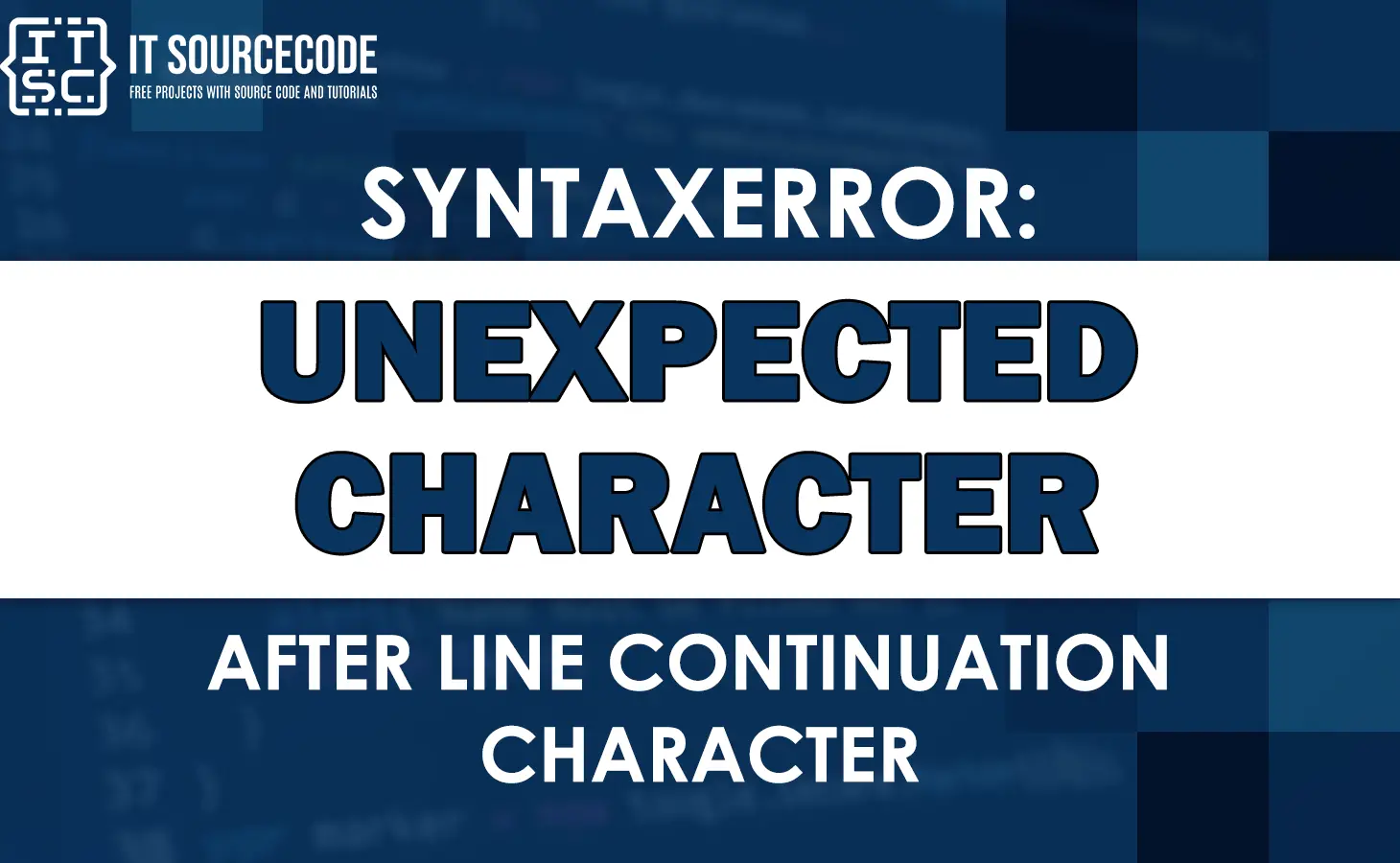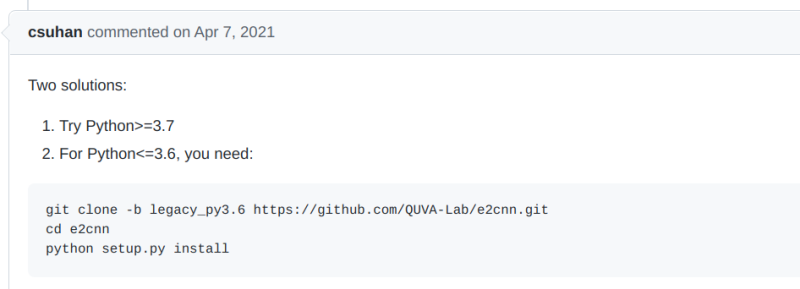Syntaxerror: Future Feature Annotations Is Not Defined
Understanding Future Feature Annotations
Feature Annotations, introduced in Python 3.0, enable developers to provide supplementary information about types in the code. These annotations help programmers improve understandability and enable static type checkers to identify possible issues without having to execute the code. Future Feature Annotations is a specific implementation of these annotations in Python 3.7 and later versions.
What are Feature Annotations?
Feature Annotations are a way to indicate the expected types of variables, function arguments, and return values within the Python code. They provide additional information to both humans and static analysis tools about the structure and types of objects being used. While not enforced at runtime, they are highly useful for type checking tools and automated documentation generation.
Defining Future Feature Annotations
In Python, future feature annotations are defined using a colon followed by the type hint. These annotations are placed after the variable, function argument, or function return value declaration. For example:
def greet(name: str) -> str:
return “Hello, ” + name
The future feature annotation here indicates that the `name` parameter is of type string and the function will return a string.
Importance of Future Feature Annotations
Future Feature Annotations are crucial for enhancing the readability and maintainability of Python code. By providing explicit type information, these annotations improve code documentation and make it easier for other developers, or even future versions of oneself, to understand the codebase. Additionally, static type checkers, such as `mypy`, can catch potential type errors and improve code reliability.
Benefits of Using Future Feature Annotations
There are several benefits to using Future Feature Annotations in Python:
1. Enhanced Readability: By explicitly stating the types of variables, arguments, and return values, the code becomes more accessible and easier to understand.
2. Improved Documentation: Annotations serve as a form of inline documentation, helping fellow programmers understand the codebase and its structure.
3. Type Checking: Annotations enable static type checkers to catch potential errors and inconsistencies early on, avoiding runtime issues.
4. IDE Support: Many integrated development environments (IDEs) can provide better autocompletion and code suggestions based on the type information provided in the annotations.
Challenges in Implementing Future Feature Annotations
While Future Feature Annotations offer numerous benefits, there are a few challenges to consider:
1. Learning Curve: Developers unfamiliar with type hints may find it initially challenging to understand and implement Future Feature Annotations.
2. Compatibility: Not all third-party libraries and codebases are fully compatible with Python 3.7 and later versions, which might limit the usage of Future Feature Annotations in certain scenarios.
3. Backward Compatibility: Older versions of Python do not support Future Feature Annotations, making it challenging to maintain cross-version compatibility in codebases.
Examples of Future Feature Annotations
Let’s consider some examples to better illustrate the usage of Future Feature Annotations:
Example 1: Function argument with type hinting
def calculate_area(length: int, width: int) -> int:
return length * width
In this example, the function `calculate_area` takes two integer arguments, `length` and `width`, and returns an integer value.
Example 2: Type hinting for variables
age: int = 25
name: str = “John Doe”
These lines of code define two variables, `age` and `name`, with their corresponding types.
How to Use Future Feature Annotations in Python
To leverage Future Feature Annotations in Python, you need to ensure that you are using Python 3.7 or a later version. If you are running an older version of Python, you can update your installation to the latest version by following the appropriate steps for your operating system.
For example, to update Python on Ubuntu, you can use the following commands:
$ sudo apt update
$ sudo apt upgrade python
Once you have an updated Python installation, you can start using Future Feature Annotations by following the syntax explained earlier.
Exploring Potential Future Enhancements for Feature Annotations
Python’s Future Feature Annotations offer a significant improvement to the language, but there are always opportunities for further enhancements. Some of the potential future improvements could include:
1. Enhanced Type Checking: Making the static type checking more robust and capable of identifying more complex type issues.
2. Integration with IDEs: Further improving IDE integration to provide even better code suggestions and error detection based on the type hints.
3. Standardization of Type Hints: Establishing standard practices and conventions for type hints to ensure consistency across different codebases.
FAQs
Q: How can I update Python on Ubuntu?
A: To update Python on Ubuntu, you can use the `sudo apt update` and `sudo apt upgrade python` commands.
Q: What is __future__ in Python?
A: __future__ is a module in Python that allows the use of features that are not compatible with the current version but are planned for future releases.
Q: How can I install Python 3.8 on CentOS 7?
A: To install Python 3.8 on CentOS 7, you can use the package manager `yum` with the command `sudo yum install python38`.
Q: What should I do if “Python setup.py egg_info” did not run successfully?
A: If the “Python setup.py egg_info” command did not run successfully, you may need to check for any missing dependencies or consult the documentation for the specific package you are trying to install.
Q: How can I update Python to version 3.7 on Ubuntu?
A: To update Python to version 3.7 on Ubuntu, you can use the `sudo apt update` and `sudo apt upgrade python3` commands.
Q: How can I downgrade the Python version on Ubuntu?
A: Downgrading the Python version on Ubuntu can be a complex process, and it is generally not recommended unless necessary. It involves uninstalling the current version and manually installing an older version.
Q: How can I set Python 3.9 as the default version on Ubuntu?
A: To set Python 3.9 as the default version on Ubuntu, you can use the `update-alternatives` command. First, check the available versions with `update-alternatives –list python3`, and then set the desired version with `sudo update-alternatives –config python3`.
Q: Where can I download Python 3.6 64-bit?
A: Python 3.6 64-bit can be downloaded from the official Python website (www.python.org) under the Downloads section. Select the appropriate installer for your operating system and architecture.
In conclusion, Future Feature Annotations in Python provide a powerful tool for improving code readability, maintainability, and static type checking. By following the correct syntax and updating to a compatible Python version, developers can leverage the benefits of Future Feature Annotations to write better and more reliable code.
Fixing Nameerror / Typeerror In Python Type Annotations (Intermediate) Anthony Explains #104
Keywords searched by users: syntaxerror: future feature annotations is not defined Python update ubuntu, __Future__, Install Python 3.8 CentOS 7, Python setup py egg_info did not run successfully, Update python to 3.7 ubuntu, Downgrade python version ubuntu, Set python 3.9 as default ubuntu, Download Python 3.6 64-bit
Categories: Top 25 Syntaxerror: Future Feature Annotations Is Not Defined
See more here: nhanvietluanvan.com
Python Update Ubuntu
Before we delve into the update process, let’s briefly discuss the importance of keeping your Python installation up-to-date. Updating Python ensures that you have access to the latest features, bug fixes, security patches, and performance improvements. It also allows you to take advantage of the latest libraries, modules, and frameworks released by the Python community.
Ubuntu comes with Python pre-installed, but the default version may not always be the latest. To determine the currently installed version of Python, open a terminal and type the following command:
“`shell
python –version
“`
The output should display the Python version, such as Python 3.8.2.
To update Python, we can make use of Ubuntu’s package manager called ‘apt’. Open a terminal and enter the following commands:
“`shell
sudo apt update
sudo apt upgrade python3
“`
The first command ‘sudo apt update’ updates the package lists for upgrades and new packages. The second command ‘sudo apt upgrade python3’ upgrades the python3 package and its dependencies.
After executing these commands, Ubuntu will download and install the latest version of Python available in the official repositories. The new version will replace the older one, and you can verify the updated version by running the ‘python –version’ command again.
Now, let’s address some frequently asked questions related to updating Python on Ubuntu:
Q1. Can I have multiple Python versions installed on Ubuntu?
A1. Yes, you can have multiple Python versions installed on Ubuntu concurrently. Python versions are usually denoted by their major and minor release numbers, such as Python 3.8 or Python 3.9. To install additional Python versions, you can make use of the ‘pyenv’ or ‘conda’ tools. These tools allow you to manage multiple Python environments and easily switch between them.
Q2. Can I update Python to the latest version using ‘pip’?
A2. ‘pip’ is a package manager for Python libraries and is not designed to update Python itself. It is recommended to use the ‘apt’ package manager to update Python on Ubuntu as described earlier. However, you can use ‘pip’ to update Python packages installed within your Python environment.
Q3. How can I update to a specific Python version?
A3. By default, ‘apt’ installs the latest available version of Python from the official repositories. If you want to update to a specific version, you need to add the corresponding repository to your Ubuntu system. There are various sources available for specific versions, such as ‘deadsnakes’ for older Python versions or ‘deadsnakes/ppa’ for the latest versions. Once you have added the repository, you can follow the ‘apt’ update and upgrade commands mentioned earlier to install the desired Python version.
Q4. Should I update Python 2 on Ubuntu?
A4. Python 2 has reached its end-of-life and is no longer actively supported or updated by the Python community. It is recommended to transition to Python 3, which is the current and actively maintained version of Python. If you have Python 2 installed on your Ubuntu system, it is advisable to remove it and update to Python 3 instead.
In conclusion, updating Python on Ubuntu is a straightforward process that can be accomplished using the ‘apt’ package manager. It is important to keep your Python installation up-to-date to leverage the latest features, bug fixes, and security patches. Additionally, it is recommended to transition from Python 2 to Python 3 as Python 2 is no longer actively supported. By following the steps mentioned in this article, you can easily update your Python installation on Ubuntu and enjoy the benefits of the latest Python version.
__Future__
Introduction (121 words):
The future is an intriguing concept that captivates our imagination and fuels our curiosity. It represents a realm of endless possibilities, where technological advancements, scientific breakthroughs, and societal transformations shape the world as we know it. In this article, we will dive deep into the realm of the future, exploring the potential it holds, the challenges it presents, and the transformative impact it can have on various aspects of our lives. Buckle up as we embark on this exhilarating journey, unraveling the mysteries of what lies ahead.
1. Unleashing Technological Revolution (195 words):
One of the defining hallmarks of the future is the rapid advancements in technology. From artificial intelligence (AI) to virtual reality (VR), 5G networks to Internet of Things (IoT), various innovations are poised to revolutionize the way we live, work, and interact. While these advancements may raise concerns about job displacement and privacy, they offer unprecedented opportunities for efficiency, connectivity, and personalization. With the convergence of cutting-edge technologies, we can envision a future where driverless cars seamlessly navigate the roads, renewable energy sources power our cities, and healthcare becomes more personalized and effective.
2. Reshaping Our World (215 words):
As the future unfolds, societal changes become inevitable. Emerging trends in demographics, urbanization, and climate change will reshape the face of our cities and communities. With an increasingly interconnected world, globalization will continue to blur geographical boundaries. Sustainable practices will be at the forefront, as we strive to protect our environment and combat climate change. Furthermore, as artificial intelligence and automation gain momentum, societies will face the challenge of redefining education, employment, and social welfare frameworks to adapt to the evolving needs of individuals and communities.
3. Advancing Human Potential (179 words):
The future promises to unlock new frontiers in human advancement. From healthcare breakthroughs to genetic engineering, innovations in biotechnology hold vast potential in improving human well-being. Gene editing technologies like CRISPR-Cas9 provide hope for eradicating genetic diseases and extending human lifespan. Furthermore, neuroscientific advancements could revolutionize our understanding of the human brain, paving the way for enhanced cognitive abilities and mental health solutions. As we venture further into the future, the limits of human potential continue to be tested.
FAQs:
Q1. Will the future be entirely dominated by technology?
A1. While technology will indeed play a significant role in shaping the future, it will not be the sole driving force. Societal, environmental, and economic factors will also contribute to the overall transformation.
Q2. How can we ensure that technology serves humanity’s best interests?
A2. To ensure that technology benefits humanity, ethical considerations, legislation, and responsible innovation play a vital role. Collaboration between technology developers, policy-makers, and the wider society is crucial to fostering a responsible and inclusive future.
Q3. What challenges may arise as the future unfolds?
A3. Challenges such as job displacement, privacy concerns, and ethical dilemmas are likely to emerge. However, proactive measures like reskilling programs, robust data protection regulations, and public discourse are essential in navigating these challenges effectively.
Conclusion (106 words):
The future holds boundless potential, offering a tantalizing glimpse into a world transformed by technology, societal advancements, and human possibilities. While uncertainties may lie ahead, embracing the future with an open mind and a willingness to adapt will allow us to navigate through uncharted territory. By envisaging a future that harnesses the full potential of our collective ingenuity and harmonizes with our shared values, we can build a world that is equitable, sustainable, and prosperous for generations to come. So, let us embrace the future and embark on this extraordinary journey together.
Images related to the topic syntaxerror: future feature annotations is not defined

Found 10 images related to syntaxerror: future feature annotations is not defined theme


![에러 해결] 'SyntaxError: future feature annotations is not defined' 에러 해결] 'Syntaxerror: Future Feature Annotations Is Not Defined'](https://blog.kakaocdn.net/dn/cPUcj2/btrGXgV8wNQ/sPFj6obtpJhzKyzj8wZcZk/img.png)


Article link: syntaxerror: future feature annotations is not defined.
Learn more about the topic syntaxerror: future feature annotations is not defined.
- SyntaxError: future feature annotations is not defined [duplicate]
- SyntaxError: future feature annotations is not defined
- SyntaxError: future feature annotations is not defined
- 成功解决SyntaxError: future feature annotations is not defined
- https://bitbucket.org/hu-geomatics/enmap-box/issue…
- SyntaxError: future feature annotations is not defined
- PyTorch for Jetson – #1196 – NVIDIA Developer Forums
- datalab SyntaxError: future feature annotations is not defined
See more: nhanvietluanvan.com/luat-hoc